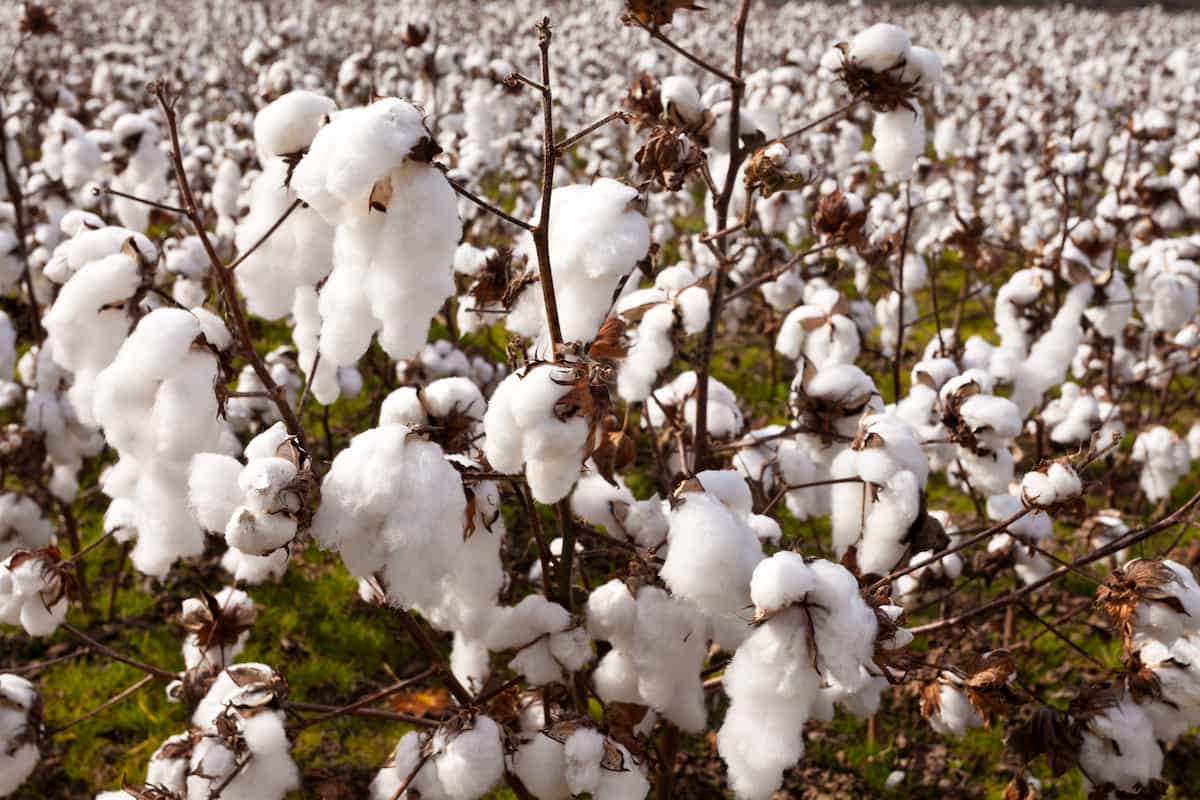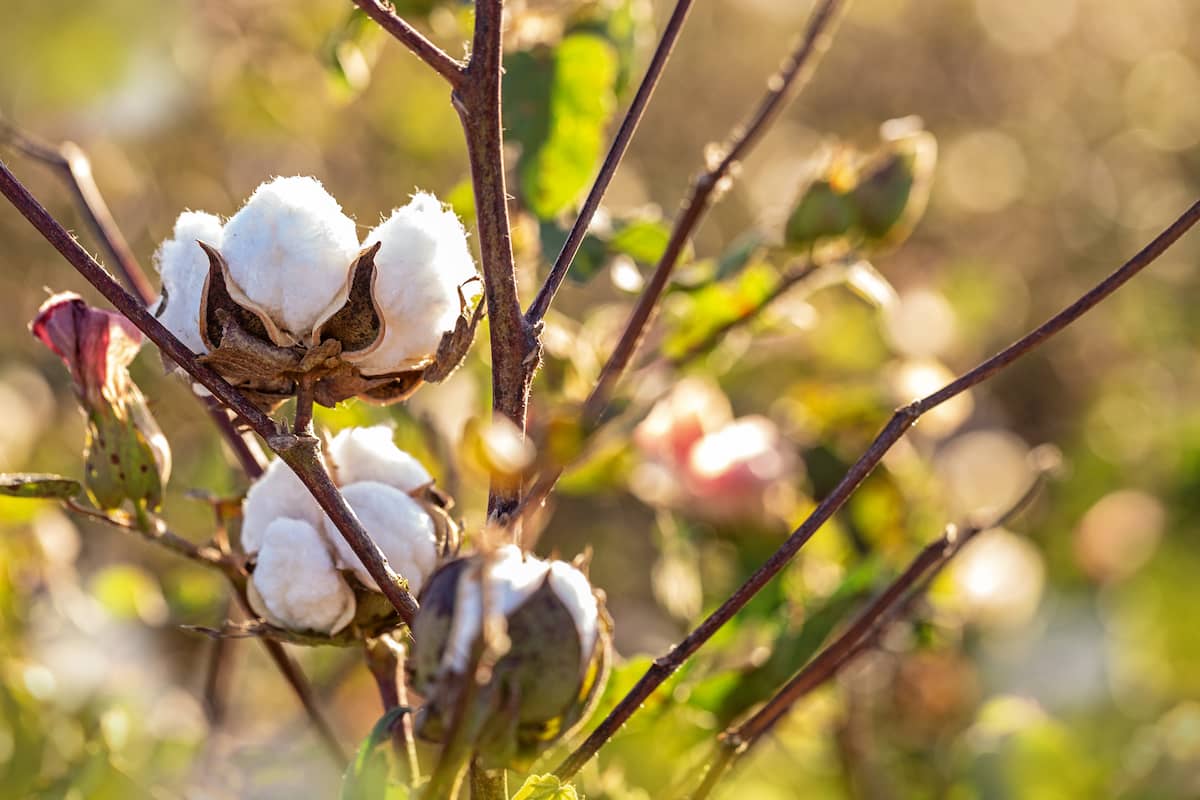Cotton farming has long been a staple in North Carolina’s agricultural landscape. The favorable climate, rich soil, and generations of experienced farmers have contributed to the state’s success in cotton production. If you’re considering starting a cotton farm in North Carolina, this step-by-step guide will help you navigate the process from planting to harvesting. We will also discuss the region’s potential profits and challenges of cotton farming.

How to Start Cotton Farming in North Carolina
Understanding North Carolina’s Climate for Cotton Farming
North Carolina’s climate is conducive to cotton farming, with an average annual temperature of 59°F (15°C) and 48 inches of yearly rainfall. Cotton thrives in warm temperatures, with a range of 60-90°F (15-32°C) ideal for growth. The state’s long growing season, from April to November, allows farmers to grow cotton without major climate-related issues.
Acquiring Suitable Land
The first step in starting a cotton farm is to acquire suitable land. Cotton requires well-drained soil with a pH level between 6.0 and 6.5. Sandy loam and silt loam soils are ideal for cotton cultivation, providing good aeration and drainage. When selecting a plot of land, consider factors such as soil type, access to water, and proximity to markets.
Soil Preparation
Start by testing the soil to determine its pH level, nutrient content, and any deficiencies that must be addressed. Amend the soil with nitrogen, phosphorus, and potassium nutrients to promote healthy cotton plant growth.
Next, plow the field to break up soil clods and create a smooth, level surface. This will help with uniform seed placement and water absorption. After plowing, use a disc harrow to further break up clods and incorporate any remaining crop residue into the soil.
Selecting High-Quality Cotton Seeds
Choose high-quality, disease-resistant cotton seeds to ensure a successful harvest. Look for seeds tested and certified for purity, germination rate, and resistance to common pests and diseases. Research different cotton varieties to find one well-suited to North Carolina’s climate and soil conditions. In North Carolina, farmers commonly grow Upland cotton varieties, such as DP 1646 B2XF and PHY 480 W3FE, due to their high yield potential and adaptability to the state’s climate and soil conditions.
Planting Cotton Seeds
In North Carolina, the planting season for cotton typically begins in mid-April and lasts until early June. To plant cotton seeds, use a mechanical planter that evenly spaces seeds and ensures proper depth. Cotton seeds should be planted at a depth of 0.75 to 1.5 inches, with a row spacing of 36 to 40 inches.
Irrigation and Water Management
While cotton is known for its drought tolerance, it requires adequate water for optimal growth and yields. In North Carolina, the average annual rainfall is generally sufficient for cotton production. However, supplemental irrigation becomes necessary during dry spells to maintain soil moisture levels. Cotton plants have specific irrigation needs throughout the growing season. The critical stages for water demand include germination, flowering, and boll development.
Consistent soil moisture is essential for plant health and yields potential during these stages. Drip irrigation and center-pivot irrigation systems are commonly used in cotton farming, as they deliver water directly to the root zone and minimize evaporation losses. Employing efficient irrigation techniques, monitoring soil moisture levels, and scheduling irrigation based on crop needs will help conserve water resources while ensuring a healthy and productive cotton crop.
Pest and Weed Management
Effective pest and weed management is crucial for a successful cotton crop. Implement integrated pest management (IPM) strategies to minimize the use of chemical pesticides and promote a sustainable growing environment. Regularly scout fields for signs of pests, such as insects, nematodes, and weeds. To effectively manage these dangers, you need make use of a variety of control strategies, including cultural, biological, and chemical approaches.
In case you missed it: How to Start Cotton Farming in Texas: A Step-By-Step Production Guide for Planting to Harvest

Fertilization and Nutrient Management
To ensure a healthy and productive cotton crop, it is essential to use the right fertilizers at the appropriate stages of growth. Primary nutrients required for cotton production are nitrogen (N), phosphorus (P), and potassium (K). A well-balanced N-P-K fertilizer can be applied at planting, with nitrogen being the most critical nutrient for cotton growth. When selecting a nitrogen fertilizer, consider using urea or ammonium nitrate, as these are highly effective and readily available.
Phosphorus is essential for root development and can be applied using mono ammonium phosphate (MAP) or diammonium phosphate (DAP). Potassium plays a vital role in water regulation and stress tolerance, and can be supplied using potassium chloride (KCl) or potassium sulfate (K2SO4).
Additionally, based on soil test results, you may need to apply secondary nutrients, such as sulfur, calcium, and magnesium, and micronutrients, like zinc, boron, and iron, to address specific deficiencies. Always follow each fertilizer’s recommended application rates and timings to optimize nutrient uptake and prevent nutrient imbalances.
Growth Monitoring and Crop Management
Monitor cotton plant growth and development throughout the growing season to ensure optimal health and productivity. This involves assessing plant nutrient levels, soil moisture, and signs of pests or diseases. Regularly walk through your fields to inspect the plants and address any issues that arise. Use appropriate management practices, such as pruning and thinning, to improve air circulation and light penetration, which promotes overall plant health.
Harvesting Cotton
Cotton is typically ready for harvest in North Carolina between September and November. Harvesting can begin when approximately 60% of the cotton bolls have opened. Use a mechanical cotton picker or stripper to harvest the cotton efficiently and minimize plant damage. After harvesting, the cotton must be ginned to separate the lint from the seeds.
Post-Harvest Management
After harvesting, it is essential to store and market your cotton properly. Store cotton in a clean, dry, and well-ventilated area to prevent spoilage and contamination. Work with local cotton buyers, brokers, or cooperatives to market your cotton and ensure you receive a fair price.
Cotton Farming Profitability
Cotton farming can be profitable but comes with inherent risks and challenges. Fluctuating market prices, input costs, and weather conditions all play a role in determining the profitability of a cotton farm. By implementing efficient production practices, adopting sustainable farming techniques, and staying informed about market trends, you can increase your chances of success in cotton farming.
In case you missed it: How to Start Cotton Farming in the USA: A Step-By-Step Production Guide

Conclusion
Starting a cotton farm in North Carolina requires careful planning, knowledge of the local climate and soil conditions, and a commitment to sustainable farming practices. Following this step-by-step production guide and remaining adaptable to changing circumstances, you can create a successful cotton farming operation that contributes to North Carolina’s rich agricultural heritage.
- Feed Your Flock for Less: Top 10 Tips to Save on Chicken Feed
- Ultimate Guide to Ossabaw Island Hog: Breeding, Raising, Diet, and Care
- Hatching Answers: The Top 10 Reasons Your Chickens Aren’t Laying Eggs
- Eggs and Economics: Breaking Down the Cost of Raising Backyard Chickens
- Defend Your Greens: Proven Methods to Keep Iguanas Out of Your Garden
- Ultimate Guide to Cinnamon Queen Chicken: A Comprehensive Guide for Beginners
- Ultimate Guide to California Tan Chicken: Breeding, Raising, Diet, Egg-Production and Care
- Ultimate Guide to Marsh Daisy Chicken: Breeding, Raising, Diet, and Care
- 10 Types of Chicken Farming Businesses You Can Start for Profits